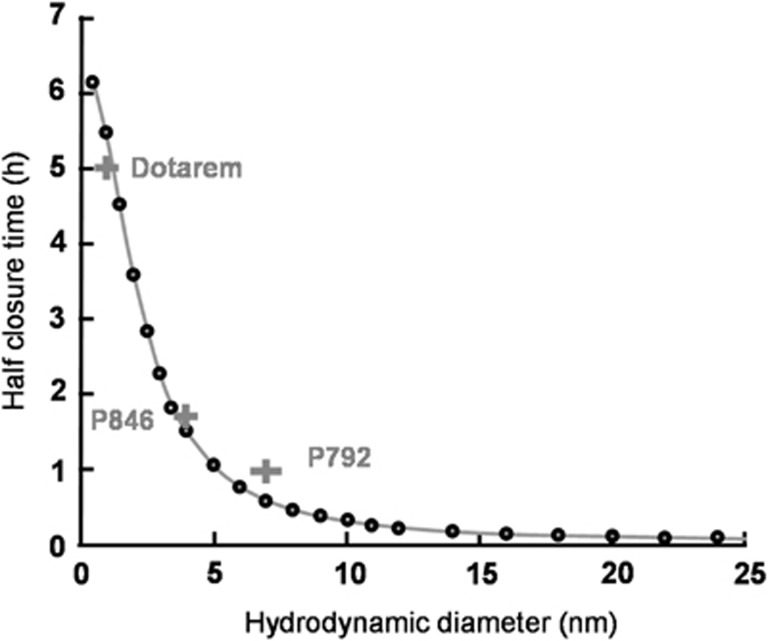Figure 5.
Prediction of the time window of blood–brain barrier (BBB) passage for a given nanoparticle size. Based on the theoretical model proposed here, half closure time, t1/2 (the time after ultrasound-induced BBB disruption that is required for the delivery of 50% of the maximal dose to the predetermined ultrasound focal point in the brain) was calculated as a function of the hydrodynamic diameter of the nanoparticle (equation (7)) (black circles). Grey crosses correspond to experimental data on the paramagnetic nanoparticle contrast agents (CA) used here (Dotarem 1 nm; P846 4 nm; and P792 7 nm) and the solid line represents the best fit with analytical function: t1/2=A/(1+B.dH2), where dH is the hydrodynamic diameter of the injected CA (in nm) and A and B are constants, A=2.35 × 104 seconds and B=0.2106/nm2.

